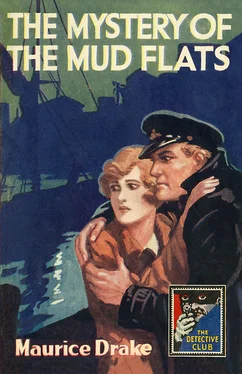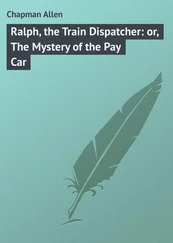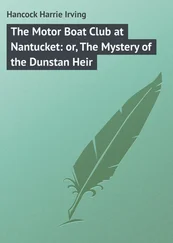Stories dominated by sea adventures are at the heart of five out of Drake’s seven novels. His knowledge and experience of sailing gives the books an authenticity which enhances their quality. The first, The Salving of a Derelict (1906), also known by its US title The Coming Back of Lawrence Averil , won a Daily Mail prize of £100 in 1906 for best story by a new writer (out of 600 manuscripts submitted). It sold well both in the UK and USA, and quickly established Drake as a popular adventure novelist. Lawrence Averil is the ‘derelict’ in the story’s title, an Oxford-educated young man from a well-to-do family; inclined to the sea from childhood. He is fond of the essays of Ralph Waldo Emerson, and in particular ‘Heroism’ (apt, given the plot’s development). Following the shock of his father’s suicide after the discovery of financial embezzlement, Averil is offered a lifeline by one of his father’s victims to work on a fishing trawler in the North Sea. Life at sea proves arduous and dangerous, as much from the hostility of other crew members as the bleak hardship of the natural elements. The challenges to Averil’s character are formidable, and he is pushed to the limits. Ultimately, the ‘derelict’ proves himself, encouraged by the daughter of his boss, a modern, self-possessed London newspaper woman. There are clear parallels between the characters and personalities of Lawrence Averil and James Carthew-West (of WO2 ), as well as their respective female partners. Also, one of Averil’s crew members subsequently appears in WO2 , working for Carthew-West on Luck and Charity .
Salvage appears again in Drake’s second sea novel Wrack (1910), but this time in its nautical form. A young naval officer, incapacitated from service early in his career, turns to salvage work at sea. The nature of salvage operations, with its risks and chances, is graphically described. The hero’s efforts prove increasingly successful and highly rewarding; there is also a promising romance interest in the background. However, the story takes an unexpected dark twist following a fateful discovery, and subsequent emotional turmoil and tragedy overtake the previous happiness and good fortune of the protagonist.
In between these two sea adventures, Drake wrote Lethbridge of the Moor (1908). Set in Exmouth and Dartmoor, the story concerns the unfortunate and cruel consequences for the young hero, George Lethbridge, of an unpremeditated act, out of character, which causes injury to a gamekeeper during a foolhardy poaching expedition. Lethbridge is sentenced to five years’ penal servitude. The remainder of the story focuses on the hardship of prison life and the misfortunes he suffers. The sensitive character of Lethbridge is sympathetically drawn. During his incarceration, Lethbridge displays admirable qualities of fortitude and stoicism, and commits acts of selfless virtue towards other inmates. A love interest also develops involving the wife of a fellow prisoner. The novel was praised by reviewers for its good and clear literary style, vivid description of Dartmoor scenery, and restrained yet forceful romance.
The popular success of WO2 in 1913 led Drake to write a sequel. The follow-up novel was The Ocean Sleuth (1915), another sea adventure mystery and featuring the same main protagonists as in WO2 . The sleuth is Austin Voogdt, now styled ‘Sherlock of the Sea’. The newly married James Carthew-West and his wife Pamela also appear in the story, but only peripherally. Voogdt, the maritime detective, is the hero of the story. The plot is strong, exciting and fast-paced; but different in many ways from Drake’s previous books. An absconding financier with £80,000 in notes is supposedly drowned at sea, after a foreign liner breaks up on rocks off the Lizard in Cornwall. Subsequently, many of the notes reappear as forgeries. At one point, there is an exchange of batches of real and counterfeit notes aboard a train in the Parsons tunnel at Dawlish. Spurred on by his love interest in a female suspect, Voogdt hunts down the real notes and solves the mystery. Both WO2 and The Ocean Sleuth were sufficiently popular to be serialised in leading British adventure story magazines in their respective years of publication.
After military service in WW1, Drake returned to his writing career in the early 1920s. His penultimate novel The Doom Window (1923) was released in the same year as his death. An interesting and unusual story, concerned with the forgery of old glass specimens. The protagonist is with a firm of glass painters in Shrewsbury, and the plot centres on the famous ‘Doom Window’ of a local church. Like Drake, the hero is an expert in judging and making stained glass, and the book includes plenty of technical detail about its manufacture, as well as the ins and outs of the business. The blurb of the US first edition refers to the story being ‘as colorful as the stained glass around which its plot turns’. The Saturday Review was particularly admiring of the scenes which describe the effect on the hero of his first visit to New York, where he visits as a consulting expert, and how he views all sorts of city life there through eyes fresh from an English cathedral town. We know Drake had himself made such a trip to New York to value a collection of old glass, and he will likely have drawn on his personal experiences when writing these descriptive passages.
Drake’s final novel Galleon Gold (1924) was published posthumously in the year after his death. Fittingly a nautical story, this time set in the Hebridean Islands, it is an exciting and realistic sea adventure of mixed fortunes, complete with discreet romance element. The plot concerns the search for, and tracing of, lost galleons and gold. It particularly brings to mind George Birmingham’s popular novel Spanish Gold (1908), which features treasure hunting off the west coast of Ireland.
While WO2 lies squarely within the Edwardian high adventure tradition, it has a wider literary significance. There are parallels with the classic boating thriller The Riddle of the Sands (1903) by Erskine Childers, regarded as one of the finest early secret service stories of literary distinction (alongside Kim by Rudyard Kipling, published the year before). This well-drawn, exciting story of amateur espionage, involving two contrasting young male protagonists sailing in the Baltic and Frisian Islands who stumble across pre-invasion manoeuvres by the German navy, was prescient in calling attention to Germany as a potential threat to Britain, especially at a time (pre- Entente Cordiale ) when France was perceived as the nation’s principal enemy. WO2 , with its allusions to Germany’s international subterfuge and developing armaments programme, was published in the year leading up to WW1. It forms part of the small but influential body of fiction dubbed ‘invasion literature’, alongside The Riddle of the Sands and The Invasion of 1910 by William Le Quex, published in 1906. All were stories with a purpose, written from patriotic leanings, and intended to raise public awareness of the threat of war with Germany and call for preparedness. Together, they provide an interesting insight into pre-WW1 British perceptions.
These novels were precursors to the adventure spy fiction of John Buchan’s The Thirty-Nine Steps (1915), Conan Doyle’s His Last Bow (1917) and E. Phillips Oppenheim’s The Great Impersonation (1920)—all involving the rounding-up of German spy gangs at the outbreak of WW1. This influence carried over to WW2. A. G. MacDonell’s The Crew of the Anaconda (1940) is in the same vein; it features the tracking down of German spies by the owner of a motor cruiser and his friends in the early days of WW2. It continues the literary association between small boats and international conspiracy threats, in the tradition of The Riddle of the Sands and WO2 . One commentator has described The Crew of the Anaconda as a kind of WW2 equivalent to The Thirty-Nine Steps . Other espionage adventure thrillers with a nautical flavour from that period include Hammond Innes’ Wreckers Must Breathe (1940), featuring the Cornish coastline, disused tin mines and a secret U-boat base; also John Ferguson’s Terror on the Island (1942), which involves abstracting an invention from Germany prior to the outbreak of WW2.
Читать дальше












